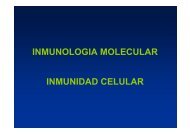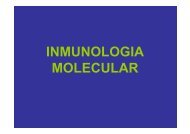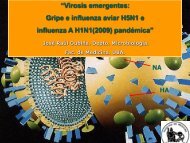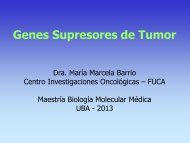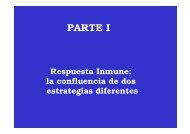FARMACOLOGIA DEL SISTEMA INMUNE
FARMACOLOGIA DEL SISTEMA INMUNE
FARMACOLOGIA DEL SISTEMA INMUNE
You also want an ePaper? Increase the reach of your titles
YUMPU automatically turns print PDFs into web optimized ePapers that Google loves.
There are two scenarios in which CTLA-4 may play a role in establishing a threshold for<br />
CD28 and/or TCR signals needed for activation of naïve T cells.<br />
Both presume that low levels of CTLA-4 pre-exist or can be rapidly induced in naïve T cells upon<br />
engagement of the TCR and CD28.<br />
The first scenario deals with the regulation of the response of T cells to tonic signaling by<br />
self-peptide/MHC interactions.<br />
Continuous TCR interactions with self-peptide/MHC provide important signals for the survival of<br />
peripheral T cells.<br />
Some of these tonic interactions, under conditions of low levels of CD28/B7 interaction, might be<br />
sufficiently stimulatory to lead to the activation of CD4+ T cells and the induction and/or mobilization of<br />
CTLA-4. Based on the analysis of the CTLA-4-/- mice, it is speculated that CTLA-4 might prevent the<br />
signals generated by these interactions from leading to full activation of CD4+ T cells.<br />
Thus, CTLA-4 may be involved in maintaining naïve CD4+ T cells and previously activated T cells<br />
in a resting state.<br />
This model is supported by the phenotype of CTLA-4-/- mice. The expansion of T cells that occurs in these<br />
mice is polyclonal. This suggests that the expansion is not the result of a failure to terminate responses<br />
to few environmental pathogens. Thus, the phenotype of CTLA-4-/- mice results from the activation and<br />
expansion of T cells reactive to low-affinity self-ligands due to a decreased activation threshold.









